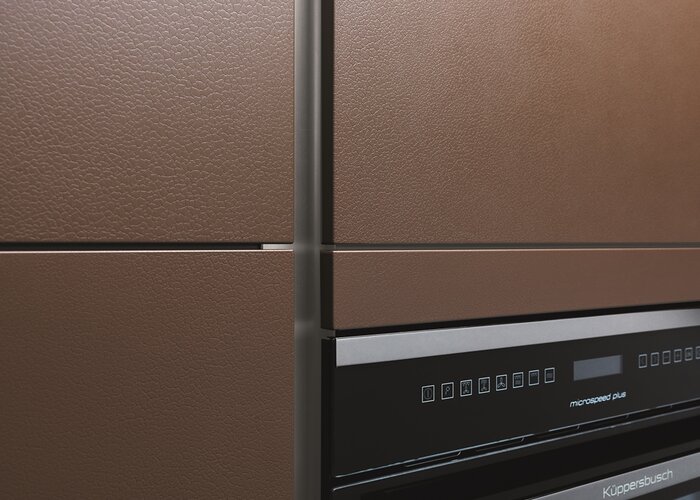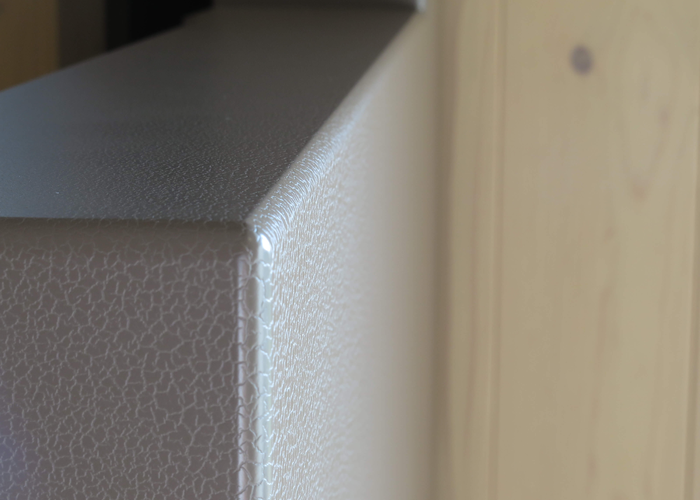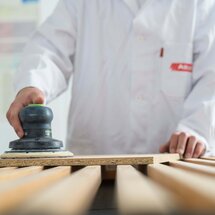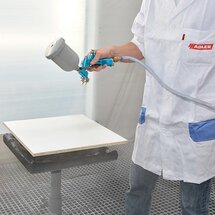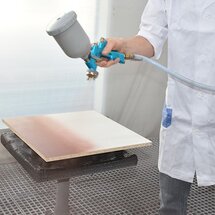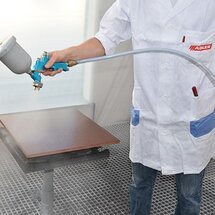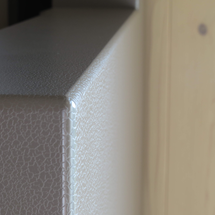
Leather effect for furniture: how to give wooden surfaces a fashionable leather look
ADLER embraces current design trends and develops solutions that enable users to create fashionable, on-trend surfaces. Their leather effect gives furniture an especially sophisticated look. In this step-by-step guide, we show you how easy it is to create this effect.
ADLER paints and varnishes allow you to give wooden surfaces a unique, high-class leather look. ADLER's leather effect gives your items of furniture the look and feel of leather and makes them truly eye-catching. Perfect for carpenters who want to offer their customers something special!
It's that simple: our leather effect in four steps:
Steps
-
Step 1: Select the substrate
Use substrates that are suitable for painting, such as sanded laminated boards or MDF/blind-veneered chipboards that have been primed with filler.
-
Step 2: Sanding
Sand the substrate before painting so that the surface is perfectly prepared for the leather look coating.
-
Step 3: Apply Pigmopur
Apply an even coat of ADLER Pigmopur in your chosen colour and allow it to dry for between 2 and 5 hours (at the most).
-
Step 4: Aduro Crackle-Effect
Apply a coat of Aduro Crackle-Effect Base. The quantity required will depend on the texture you want to achieve: less paint results in fine cracks, more paint gives you coarser cracks.
-
Step 5: Final topcoat
After 1-3 hours, apply another coat of Pigmopur in your chosen colour. For additional protection and shine, you can add a final coat of Aduro Legnopur in your desired gloss level after 3-8 hours.
-
PROFESSIONAL TIP from Dominik Schwaiger:
"Use the crackle finish on areas of up to one square metre to achieve a uniform pattern of cracking."
© by adler-lacke.com
